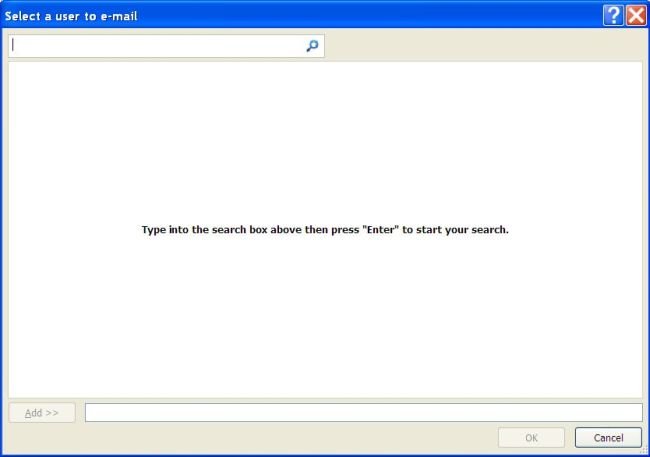Outlook.PickerDialog Method in MS Outlook 2010 to Access a SharePoint Server in VB.NET
In this article I am going to explain about how to get a list of objects such as users, distribution lists, and so forth in Microsoft Outlook 2010.
Introduction
In this article I am going to explain about how to get a list of objects such as users, distribution lists, and so forth in Microsoft Outlook 2010. For this we use PickerDialog object and Outlook.PickerDialog Method in Microsoft Outlook 2010.
Microsoft Office 2010 offer some powerful tools, using this tools you can create application. Using Microsoft Visual Basic for Applications (VBA) you can create your own application according to your need. These application can performer some specific task.
For creating application we can use
- VBA host of Excel 2010
- VBA host of PowerPoint 2010
- VBA host of Word 2010
NOTE : OneNote 2010 is not a VBA host.
Code that we use in this application are given below
Public Sub PickerDialogDemo()
Dim a As Office.PickerDialog
a = Application.PickerDialog
a.Title = "Select a user to e-mail"
Dim dh As String
dh = "{000CDF0A-0000-0000-C000-000000000046}"
a.DataHandlerId = dh
Dim pp As Office.PickerProperties
pp = a.Properties
Dim picp As Office.PickerProperty
Dim pickerID As String
pickerID = "SiteUrl"
Dim spurl As String
spurl = "http://my"
picp = pp.Add(pickerID, spurl, _
Office.MsoPickerField.msoPickerFieldText)
Dim dr As Office.PickerResults
dr = a.Show(True)
If Not dr Is Nothing Then
' The user selected at least one item so the
' code will create a new MailItem.
Dim nm As Outlook.MailItem
nm = Application.CreateItem(olMailItem)
nm.Subject = "PickerDialog Demo"
Dim result As Office.PickerResult
For Each result In dr
If result.Type = "User" Then
nm.Recipients.Add(result.DisplayName)
End If
Next
' Validate the users' display names added to the list
' of mail recipients.
nm.Recipients.ResolveAll()
Dim mailInspector As Outlook.Inspector
mailInspector = nm.GetInspector
mailInspector.Display()
Else
' If you click Cancel, the code falls through here.
End If
End Sub
Step for creating Application
Step 1 : Start MS Outlook 2010 :

Step 2 : Using Alt + F11 Key Start Visual Basic for Applications (VBA) Window :
.jpg)
Step 3 : Select on Project 1 :
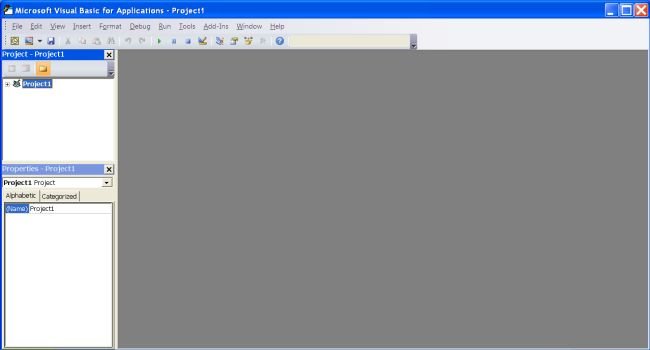
Step 4 : Double Click on project 1 ==> Select Microsoft Outlook objects ==> Double click on Microsoft Outlook objects ==> Select on ThisOutlookSession==> Right Click on ThisOutlookSession and select View Code :
.jpg)
Step 5 : Write Code in Visual Basic for Applications (VBA) Window :
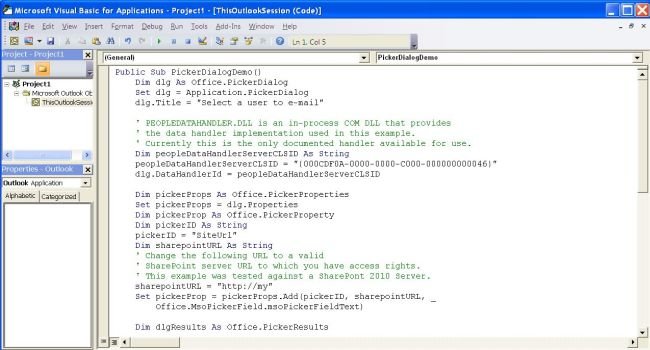
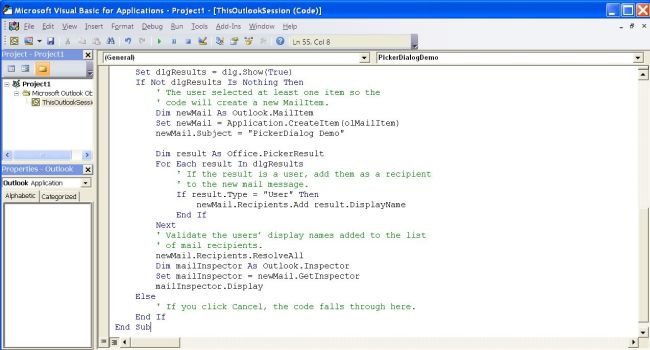
Step 6 : Run Application using F5 :
Step 7 : Macros window will open, Select Macros name and click on Run Button :
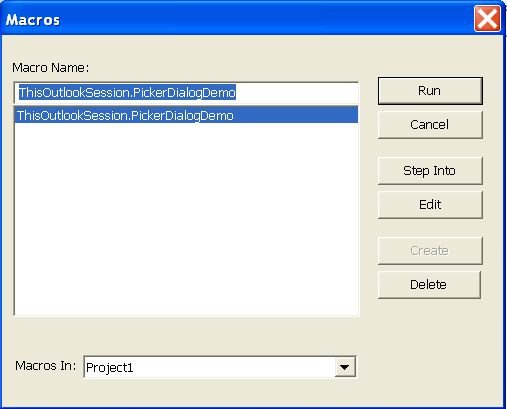
Step 8 : Output of Application :
